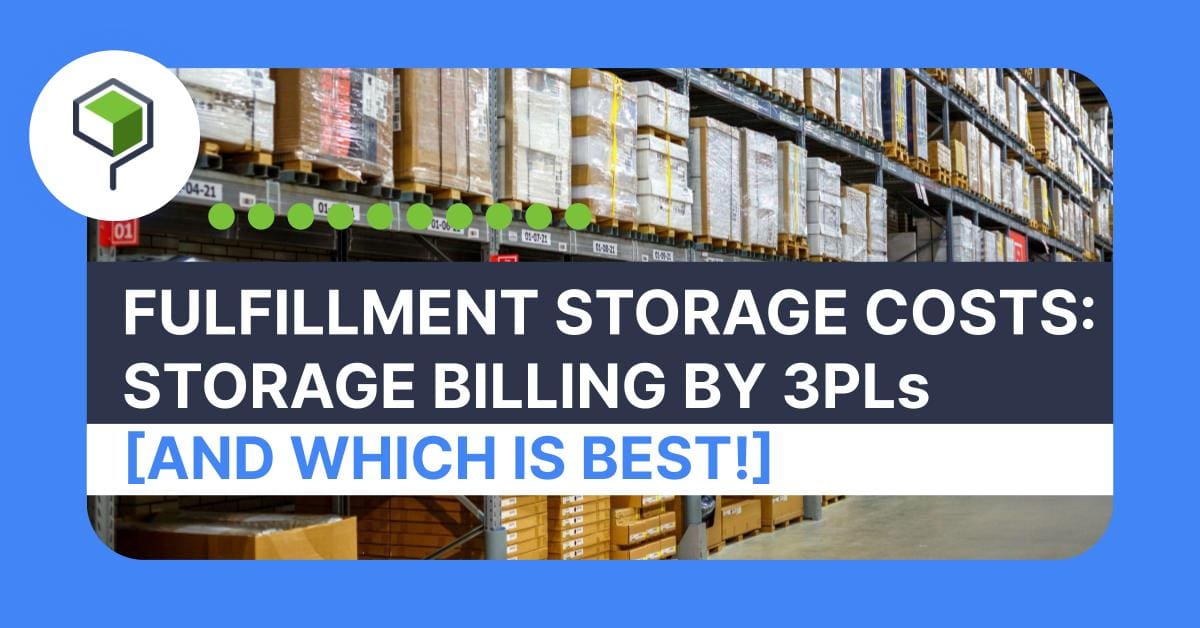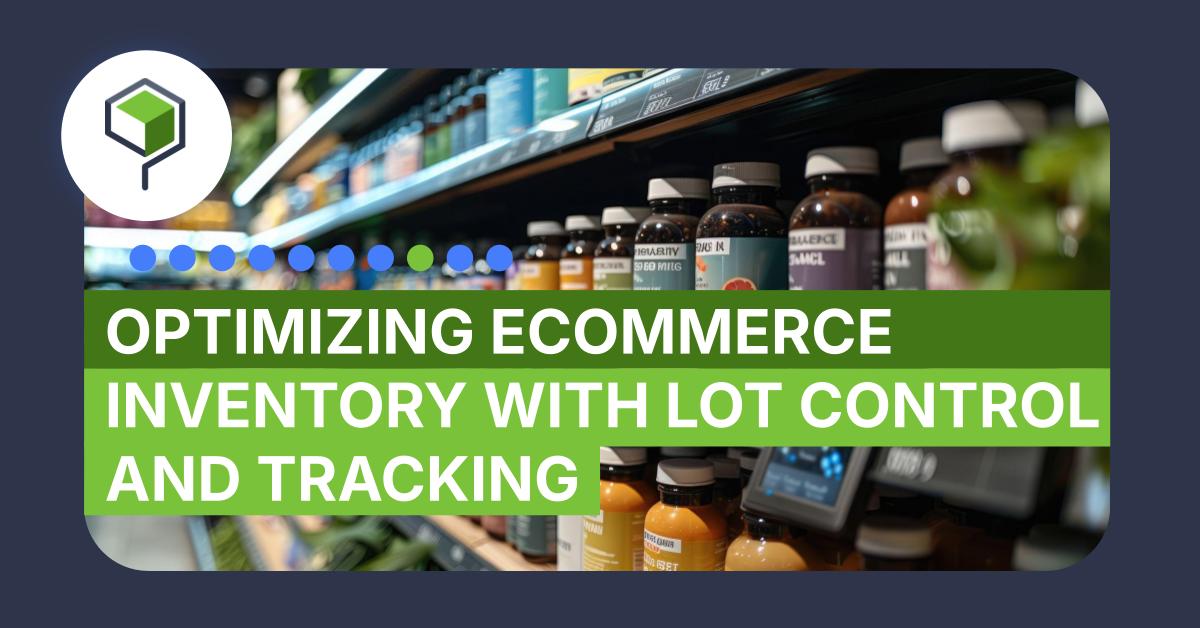Fulfillment Storage Costs: Storage Billing by 3PLs [and Which is Best!]

Any eCommerce business with a private facility or who outsources fulfillment services knows that warehouse space comes at a premium. In the second quarter of 2023, the average asking price for industrial space reached $9.59 per square foot – 16.1% higher than the same period in 2022.
While the demand for space has dropped as retailers reduce the inventory bloat seen over the past couple of years, storage fees remain one of the biggest – and ongoing – fulfillment fees faced by eCommerce brands.
As eCommerce continues to grow at double-digit rates, tighter competition in the marketplace is causing brands to face pressures on multiple fronts; difficulty procuring industrial space in metro areas, rising shipping costs, and high customer expectations for rapid delivery are causing warehousing services to take on a new level of significance.
Warehouse space as a service?
Warehousing is no longer just a fulfillment service but a powerful tool for CX management. The size, number, and location of fulfillment centers dictate an eCommerce brand’s ability to achieve competitive delivery timeframes and save money on shipping.
The difficulty of procuring enough storage space independently amid nationwide shortages is driving many businesses to consider outsourcing fulfillment to 3PLs. CBRE’s 2023 North America Industrial Big Box report found that in 2022, 3PLs accounted for 41% of all lease transactions with at least 200,000 square feet, surpassing retailers and wholesalers.
Despite this shift, the average costs of storing inventory with a 3PL are talked about far less than shipping costs or pick and pack fees – even though this contributes significantly to total fulfillment costs.
Inventory might look static, but how it’s stored and how this is billed has a massive bearing on the cost of your 3PL partnership.
Why 3PL storage fees become hidden fees
So, why are fulfillment storage fees so difficult for businesses to pin down?
The main reason is a lack of transparency over fee structure and how warehousing services are charged. Different fulfillment providers charge for storage based on different metrics – and whether warehouse space is being ‘filled’ can involve many different interpretations.
Add fluctuating billing frequency and unclear storage counting into the mix, and businesses are left with a perfect ‘apples vs. oranges’ scenario where it’s impossible to compare one 3PL’s pricing structure with another.
No matter whether you’re switching fulfillment providers or partnering with one for the first time, this makes 3PL storage costs very challenging to get a grasp on – especially when additional fulfillment fees come into the picture.
Common 3PL storage pricing methods
Storage billing by 3PLs can be broken down into three main categories. Most fulfillment companies charge using a combination of the below pricing structures, depending on the goods stored and the amount of space a brand requires. For example, high storage requirements will generally open up more opportunities to negotiate discounts or concessions on fulfillment pricing.
It’s important to note that retailer fulfillment companies such as Amazon and Walmart generally charge for fulfillment and storage fees in tandem, since storage within their nationwide fulfillment centers is the primary offering, rather than pick and pack or value-added fulfillment services. However, these storage costs will fluctuate based on the time of year and the speed of inventory turnover, unlike a 3PL partnership where storage and fulfillment costs are negotiated.
Per pallet/shelf/bin per month/week/day
Charging for a particular storage method over a fixed period of time is a straightforward way to understand how storage fees contribute to total fulfillment costs. This system is easy to quantify and communicate to potential 3PL customers, which is why it’s commonly featured on website pricing pages for quick calculations of estimated warehousing fees.
However, charging per pallet or shelf opens up eCommerce businesses to rampant overcharging on storage space. For example, a 3PL may charge for an entire shelf that only holds one or two items, as this space cannot be easily reappropriated. Plus, units such as ‘shelf’ or ‘bin’ are not a consistent size/volume across fulfillment companies, meaning it’s difficult to know exactly how much space your business is paying for.
Per cubic foot per month/week/day
Paying per cubic foot of storage offers brands the benefit of only paying for the exact storage space they are actively using inside a fulfillment center. In sum, you literally get what you pay for.
This model is simple for 3PLs to invoice and audit, and there’s also a vested interest in making sure that warehouse space is properly optimized, unlike a per-pallet or per-shelf approach to storage fees.
However, this does mean that storage fees based on cubic feet can be a lot higher than for pallets or bins, as it takes more time, technology, and labor for 3PLs to track accurately. Understanding your SKU’s product dimensions will give you an accurate estimate of cubic foot storage costs, so you can calculate fulfillment costs and not be surprised by hidden costs.
Dedicated square feet per month/week/day
The advantage of paying for dedicated warehouse space is obvious; eCommerce brands know exactly what they’re paying for over the given period and are guaranteed to have a fixed amount available whenever they need it. This is particularly useful in cases where shipments of inventory arrive early or late, or you end up with more excess stock on hand after a sales event than you predicted.
For 3PLs, the benefit of this pricing structure is obvious; locking in customers for so many square feet of storage space over a minimum period ensures that fulfillment centers are being utilized to their fullest extent.
However, dedicated square feet only pay off for an eCommerce business during times when warehousing availability is particularly scarce, as this arrangement is inflexible and prone to overspending. But when space is constrained, taking a ‘just in case’ approach to fulfillment storage services can be worth paying a little extra to cover the bases and avoid running out of space in your fulfillment center.
Which 3PL storage fee structure is the best?
No one storage pricing model will fit the needs of every eCommerce brand, since every 3PL client has a different product assortment and rate of inventory turnover. And when businesses are constantly adding new SKUs to their lineup, the ideal 3PL storage solution is likely to change.
For example, if you’ve chosen a per-pallet storage pricing system because your product dimensions allow you to maximize storage space, this can easily be derailed by a new assortment of inventory with different dimensions.
Some solutions, such as dedicated square feet, offer eCommerce businesses more flexibility than others. Depending on how much your inventory levels and order volumes fluctuate throughout the year, you need to weigh up the risk that space won’t be there when you need it, which can translate the lost sales opportunities or seeking more costly space elsewhere.
3PL fulfillment and storage with ShippingTree
Cubic feet offers the most straightforward way for both fulfillment companies and brands to manage storage and tie it directly to their products or available space. This is why ShippingTree uses a pricing structure of # cubic feet per month and bills for storage daily, so our customers have full transparency over storage fees and pay for the actual days they use – no hidden extras! Talk to ShippingTree to find out how we can reduce storage costs and optimize warehouse space for your business.



